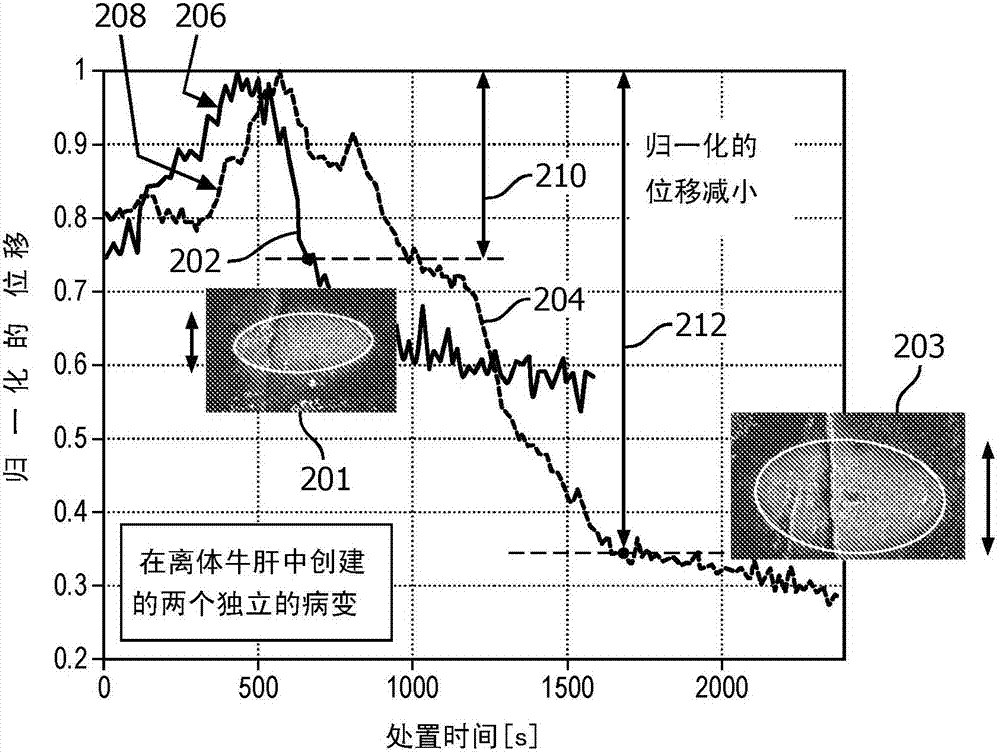System and method for adaptive ablation and therapy based on elastography monitoring
A technology of elastic imaging and imaging system, which is applied in the direction of surgical system user interface, application, parts of surgical instruments, etc., and can solve problems such as not being a good indicator of treatment effect
- Summary
- Abstract
- Description
- Claims
- Application Information
AI Technical Summary
Problems solved by technology
Method used
Image
Examples
Embodiment Construction
[0019] In accordance with the present principles, systems, methods, and apparatus are described for providing real-time feedback to a clinician or other operator during an ablation procedure. In particularly useful embodiments, the systems, methods and instruments employ shear wave elastography (SWE) as a modality for monitoring radiofrequency ablation (RFA) procedures. During RFA, the elastic properties of the tissue change so that the area being ablated becomes initially softer and progressively harder. Due to the dependence of shear wave velocity on underlying stiffness, SWE was able to discern the extent of lesion formation during RFA by determining the change in shear modulus during lesion formation. Different parameter sets for driving and tracking shear modulus or other shear wave or elastic parameters at various stages of the lesion formation process can be provided.
[0020] In accordance with the present principles, the systems, methods and instruments provide real-...
PUM
 Login to View More
Login to View More Abstract
Description
Claims
Application Information
 Login to View More
Login to View More - R&D
- Intellectual Property
- Life Sciences
- Materials
- Tech Scout
- Unparalleled Data Quality
- Higher Quality Content
- 60% Fewer Hallucinations
Browse by: Latest US Patents, China's latest patents, Technical Efficacy Thesaurus, Application Domain, Technology Topic, Popular Technical Reports.
© 2025 PatSnap. All rights reserved.Legal|Privacy policy|Modern Slavery Act Transparency Statement|Sitemap|About US| Contact US: help@patsnap.com



